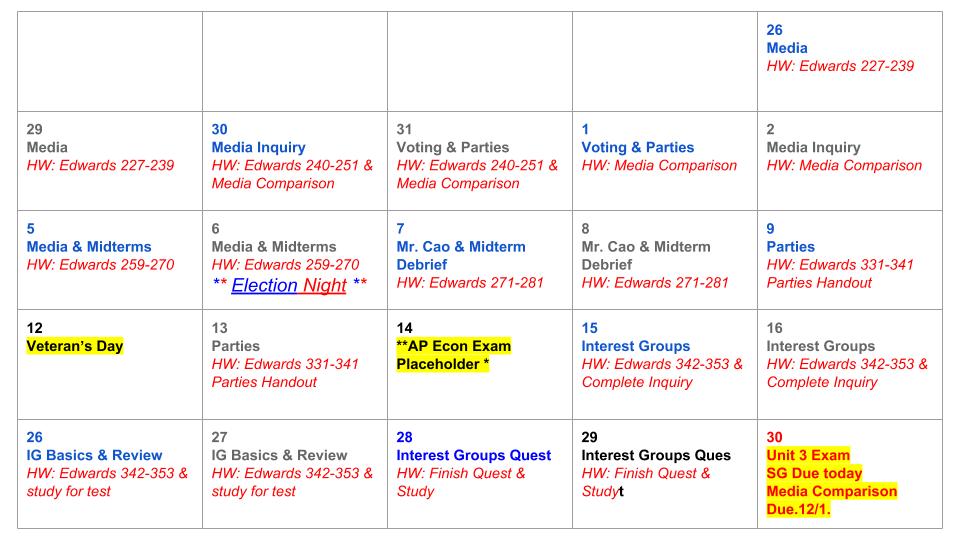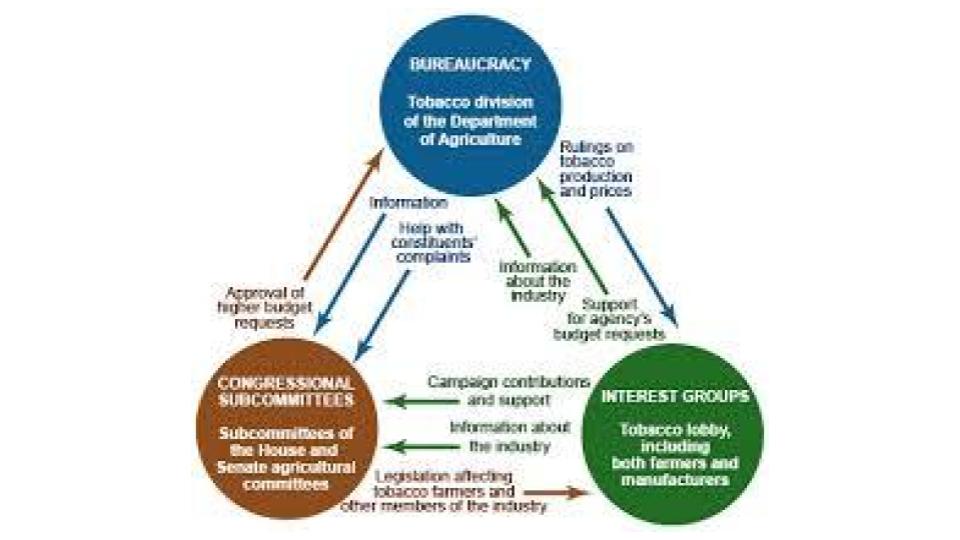Unit 3 Media, Political Parties & Interest Groups
Essential Questions
- Identify and explain the role of the media in the political system.
- LO 4.B.1: Explain the media’s role in providing citizens with political information.
- LO 4.B.2: Analyze the development, implications, and consequences of increasingly diverse numbers of media and political communication outlets.
- LO 4.C.1: Explain the functions and impact of political parties with regard to the electorate and the government.
- LO 4.C.2: Analyze why political parties change and adapt to political realities.
- LO 4.C.3: Explain structural barriers to third party and independent candidate success.
- LO 4.C.4: Analyze the benefits and potential problems of interest group influence on elections and policy making.
- LO 4.C.5: Analyze the reasons for and impact of social movements and protest politics.
- LO 4.C.6: Assess the impact of elections, public opinion, interest groups, and political parties on policy outcomes.
- LO 4.E.2: Explain changes in the structure and function of election campaigns since 1972.
- LO 4.E.3: Evaluate the benefits and drawbacks of candidate-centered campaigns in the 21st century.
- LO 4.E.4: Analyze the relative importance of money and democratic principles in elections.
- LO 4.E.5: Analyze whether the Electoral College facilitates or impedes democracy.
Vocabulary
|
Linkage institutions
Lobbying Grassroots lobbying Mass media Media events Gatekeepers Watchdogs Divided government Gridlock |
Independent expenditures
Issue advocacy ads Super PACs 527s Public funding FEC Interest groups Single-issue groups Public interest groups |
Economic interest groups
Amicus curiae Class-action lawsuit Litigation Free riders Party coalition Pol Action Committees Soft money |
Party platform
Super Tuesday Super delegates Delegates Frontloading Horserace journalism National committee |
Videos
|
|
|
|
|
|
|
|
Activities & Assignments
Political Parties doc
Political Parties PPT
Political Parties handout
Interest Groups Chart doc
Interest Groups Disc
Gerrymandering Interactive
Political Parties Function doc
Political Parties History doc
Development of Political Parties doc
Party Platforms Summary
|
|
|
|
|
|
|



